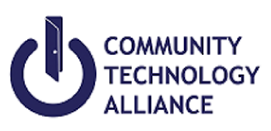Two organizations try a new approach in ending homelessness.
January 3, 2018
Pilot Partnership combines forces to help more people access more resources.
The Coalition of Homeless Service Providers, a group of private non-profit and public organizations working together in Monterey and San Benito counties to end homelessness, was already forward-thinking when it came to outreach.
They’d integrated CTA’s HOME app into their toolkit so outreach workers could do assessments while in the field. “Mobile workers could administer the VI-SPDAT and get people on the housing list,” said Katherine Thoeni, the Coalition’s Executive Officer. “But what if that person needs a food pantry, or is looking for a clinic?”
Embedding information about resources in the HOME app would mean building a services inventory. “But why reinvent the wheel?” said Thoeni. “Instead we opened up conversation with 2-1-1, an organization that already has an extensive database.”
Earlier decisions made future partnership possible
When CTA first built CES into a HOME app, the Coalition had made a critical decision. “We didn’t want to limit it to only those organizations who are using HMIS. We wanted it to be expandable.” Because of this policy, CTA was able to build out HOME’s technology so that anyone organization that interfaces with the homeless, like an ER or a police department, can access the Coalition’s CES.
“It validates our collective decision to build our CES from the ground up,” said Thoeni, “because as these opportunities come up, we can expand it to do this. We’re not locked in to a single system.”
Sharing goals, sharing clients. A partnership with promise.
The Coalition’s goal is to get the homeless housed as quickly; 2-1-1’s goal is to connect people to services. “Ultimately, if your goal is to house people,” said Bob Russell, Chief Executive Officer of CTA, “you need both types of services. You need to ensure that those at risk of becoming homeless do not become homeless.”
Coordination between the two organizations could lead to more access to services and improved housing outcomes. In a nutshell, here’s what the Homeless Coalition and 2-1-1 Partnership enables:
- HOME users will be able to query 2-1-1 re: available services for homeless clients.
- 2-1-1 will respond with services.
- 2-1-1 will also be able to determine if at-risk clients are eligible for financial assistance.
- both organizations can analyze and visualize data with CTA’s Interactive Reporting
Making it easier to spot trends
When the Coalition finds a client who needs services, they’ll use HOME to query 2-1-1 and see what’s available for that client. Two weeks after the initial encounter, HOME will generate an email follow up to see what services were accepted. “They’re hoping that the response rate among the ones housed will reveal a cluster of services that were most useful,” said Russell.
Using CTA’s Interactive Reporting allows both organizations to access a richer pool of data and insight. When you know exactly how many requests for food pantries there were in any given zip code, you’re able to spot trends and determine whether there are gaps in services. You can also see exactly how many people touched the system in the last five years then came back and touched it again versus what % exited to a permanent housing.
“If you have confidence in the data, then you could make recommendations and partnerships with confidence,” said Thoeni. “We could determine, for example, that the programs with the highest rate of success also had job training and relapse prevention services.”
“We’re very excited,” said Thoeni. “We think this new partnership will be a win/win for our entire community.”
What’s your experience with partnerships? What’s holding you back from joining forces with a like-minded organization? Share your story.

